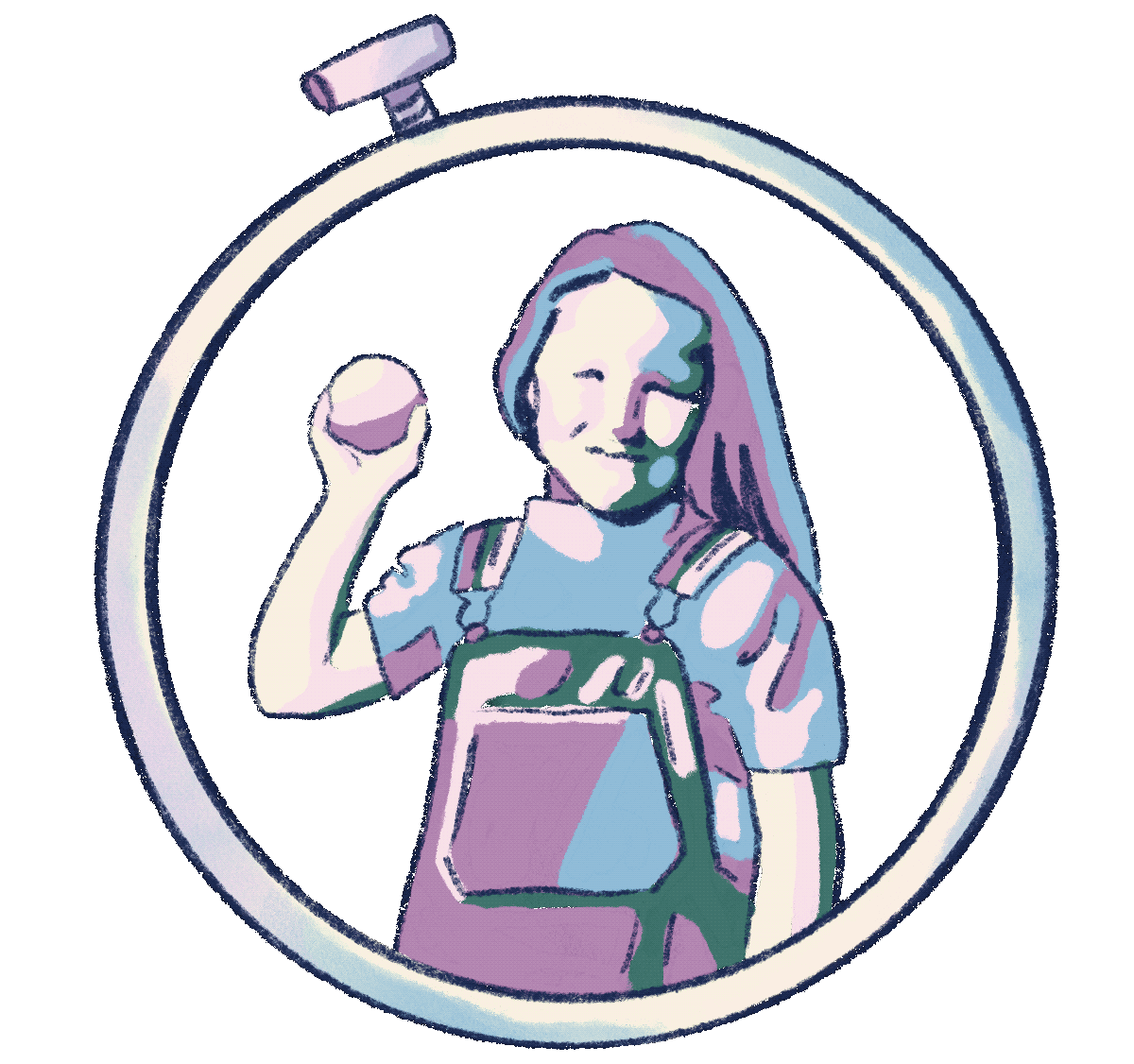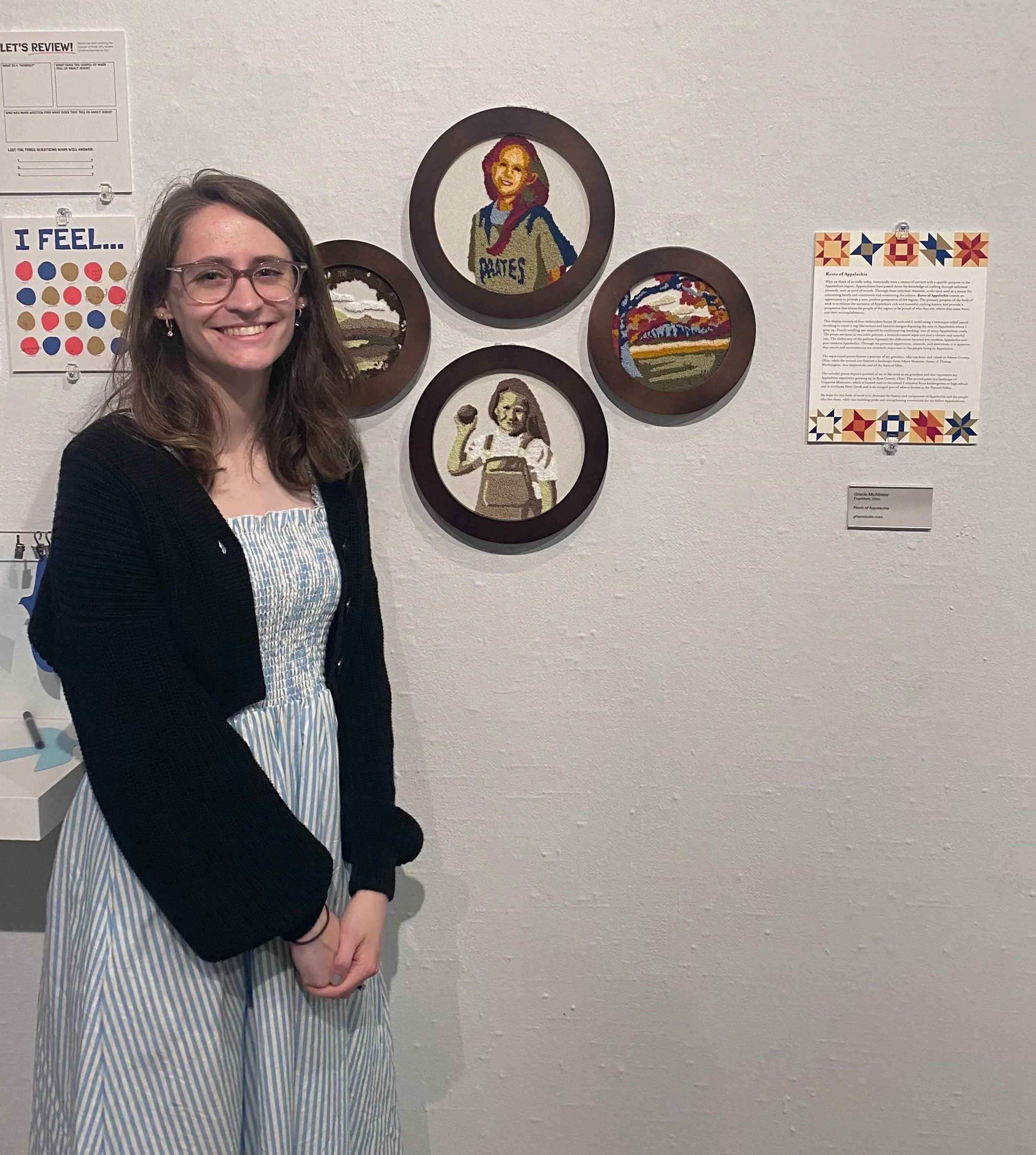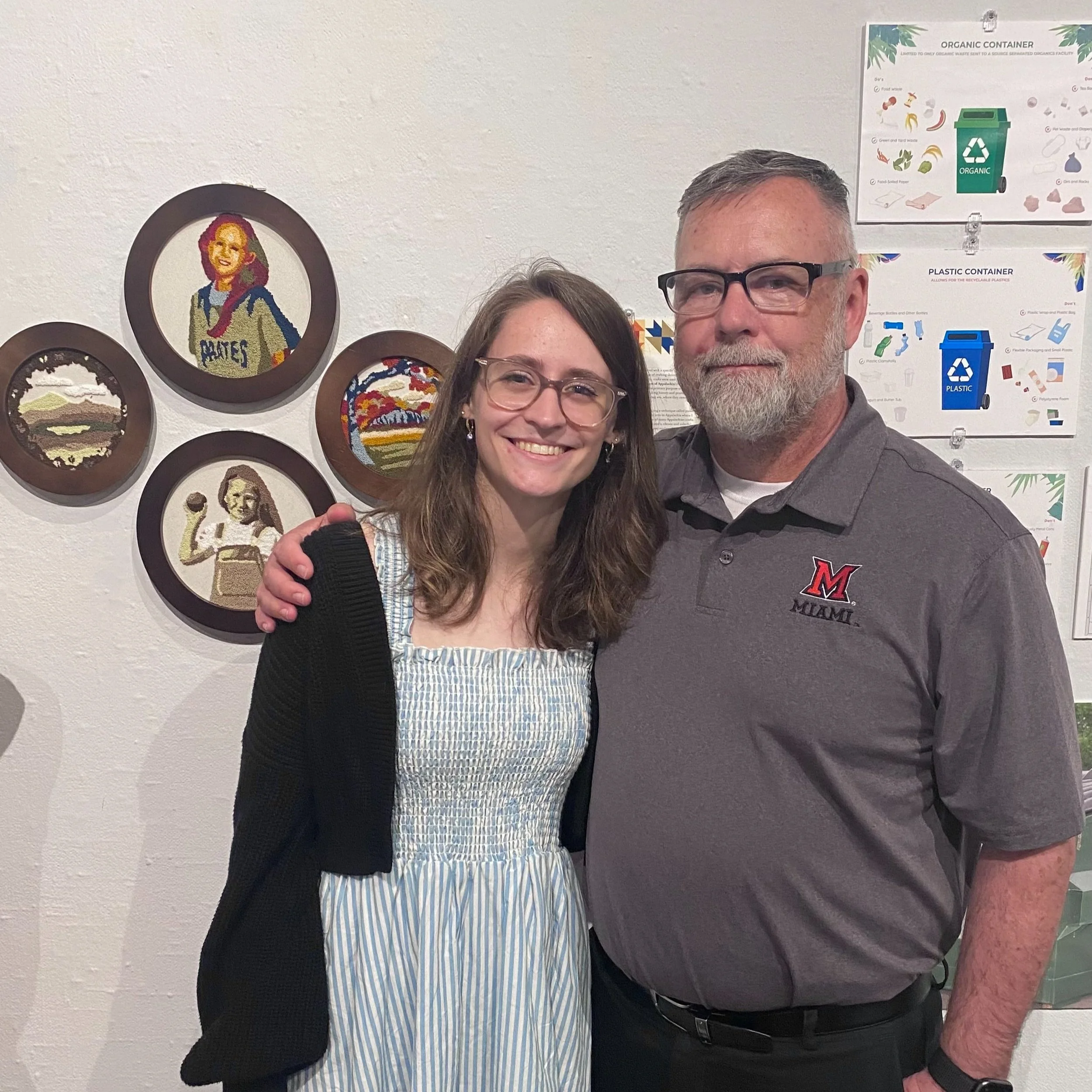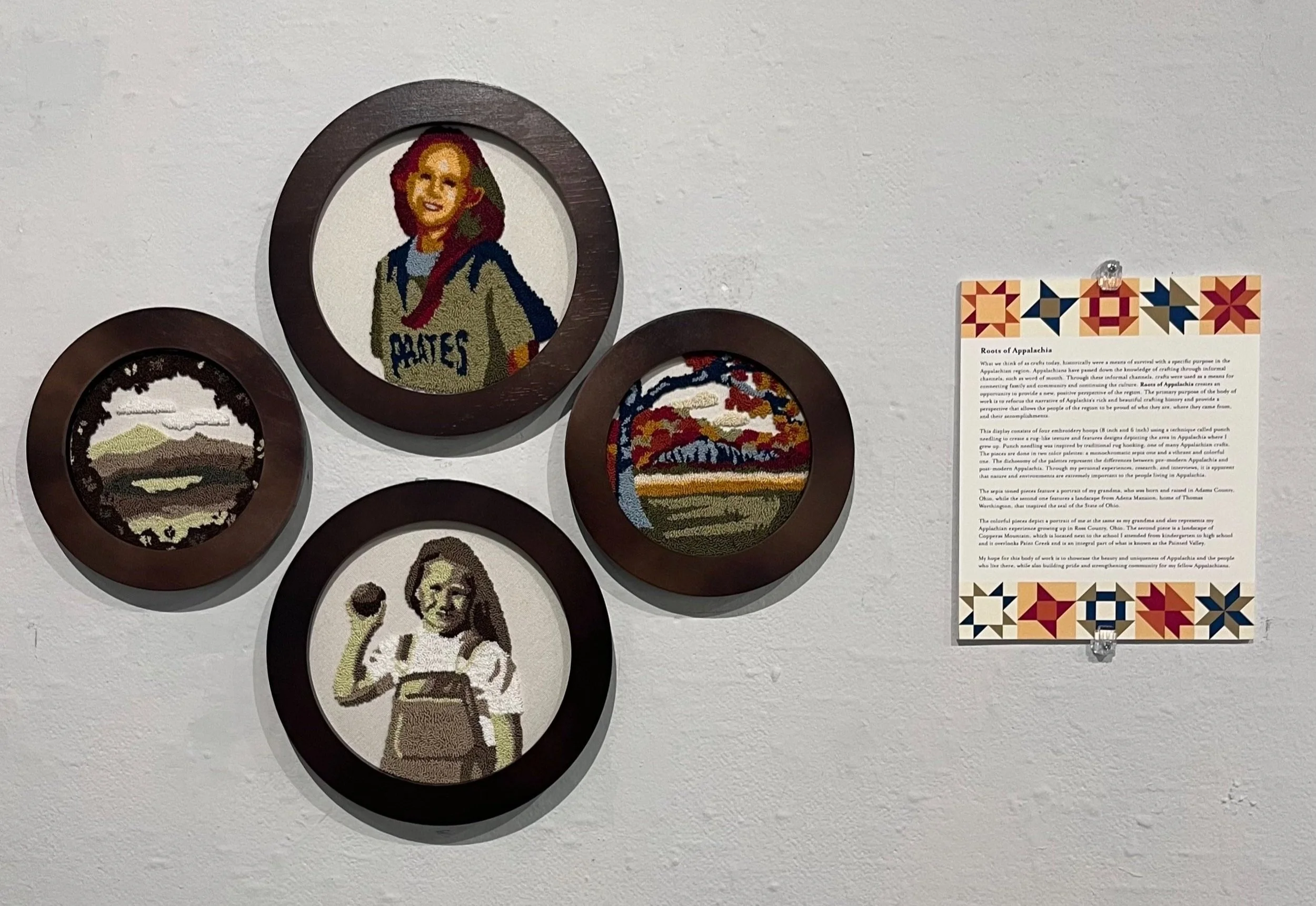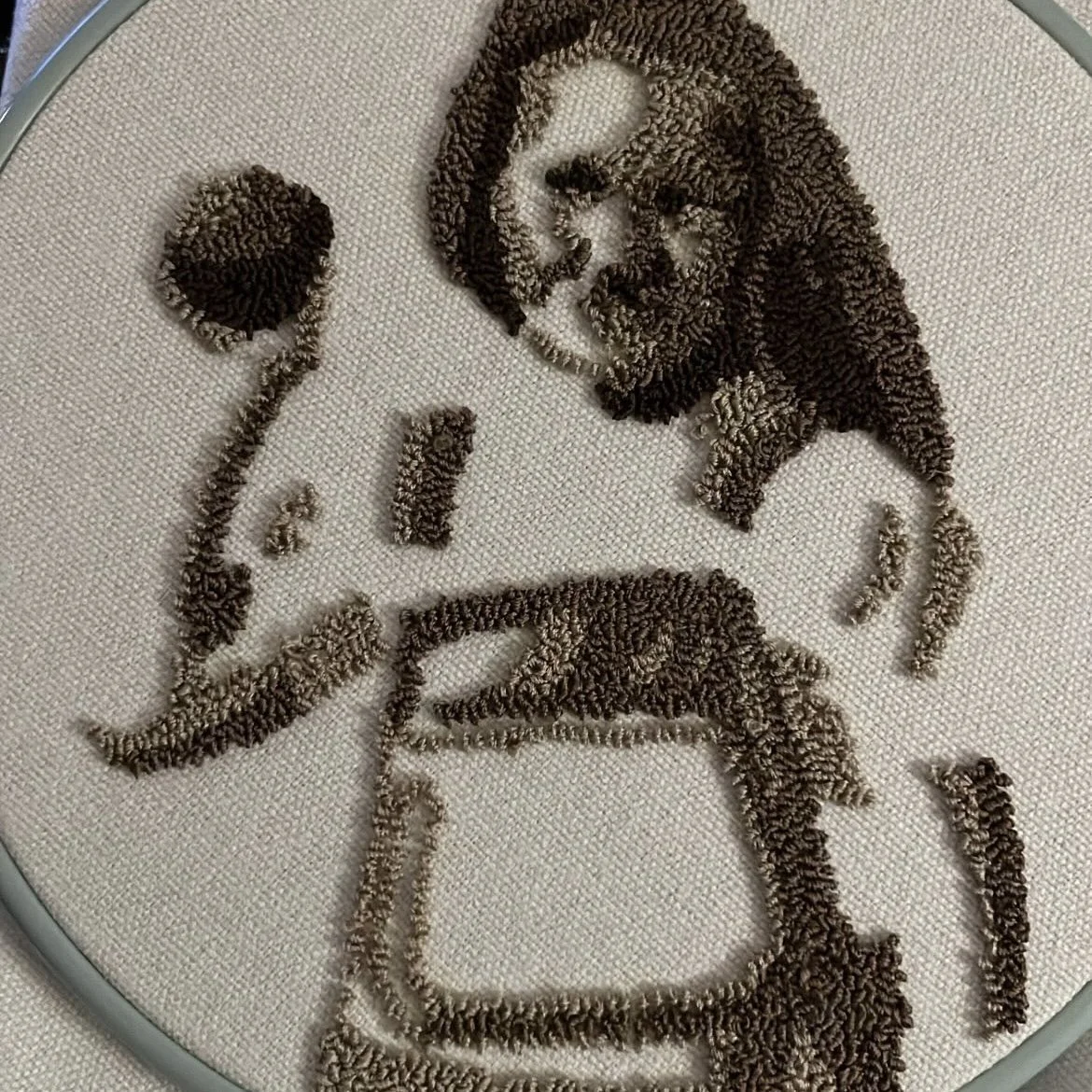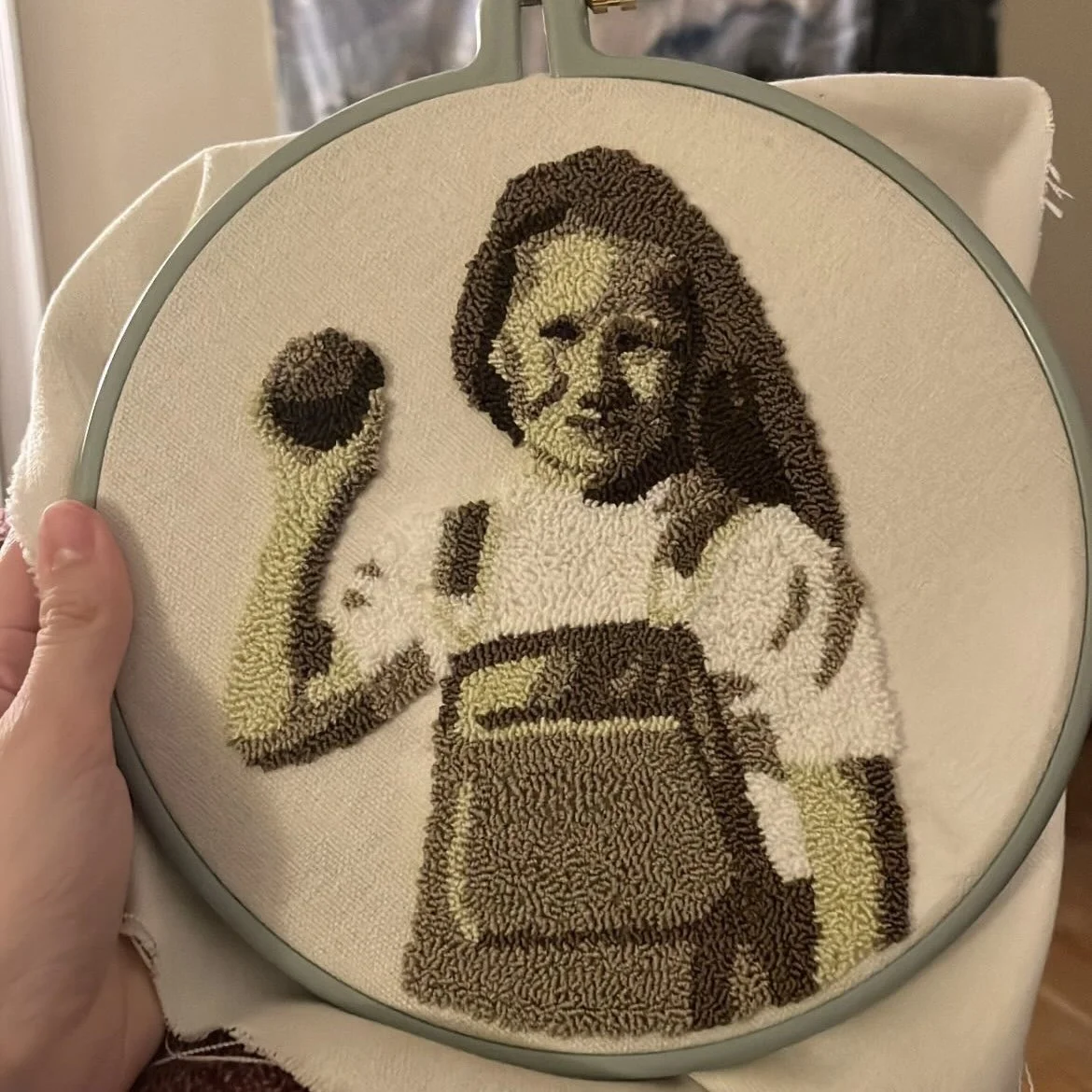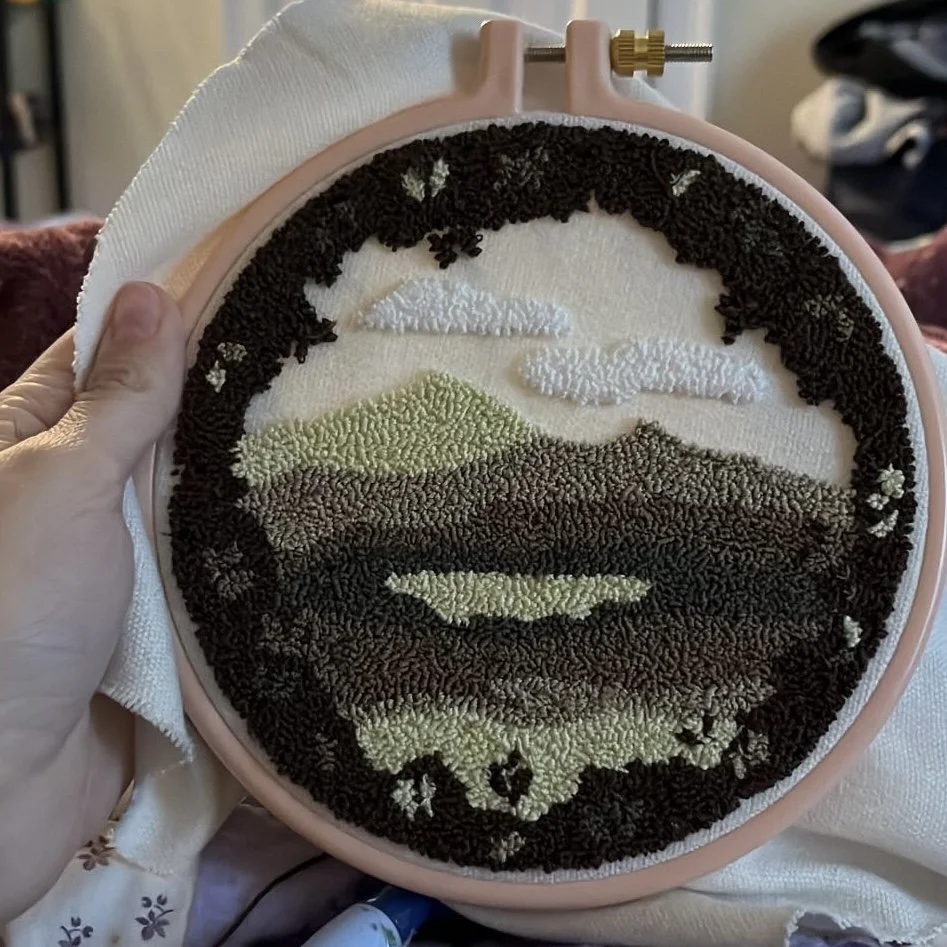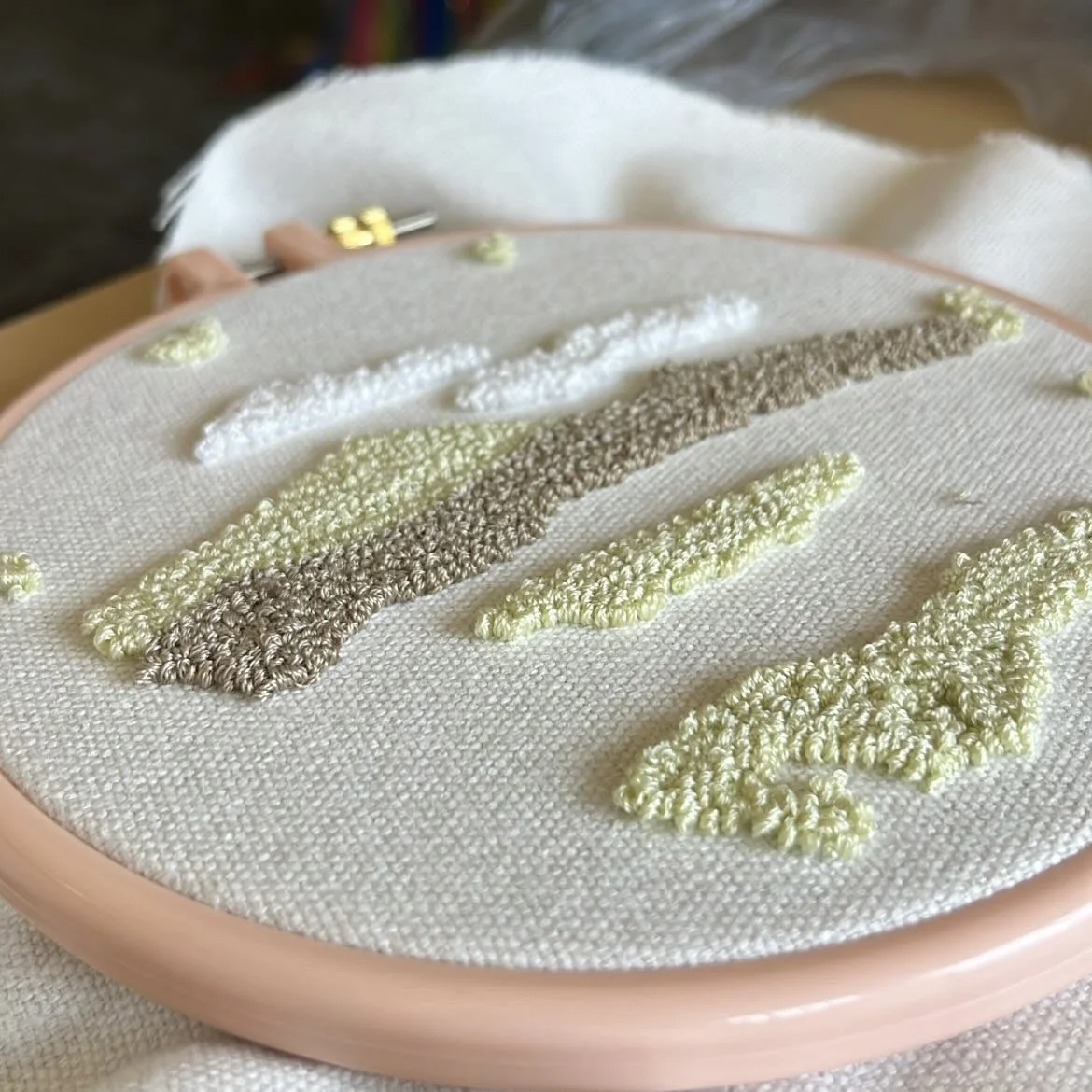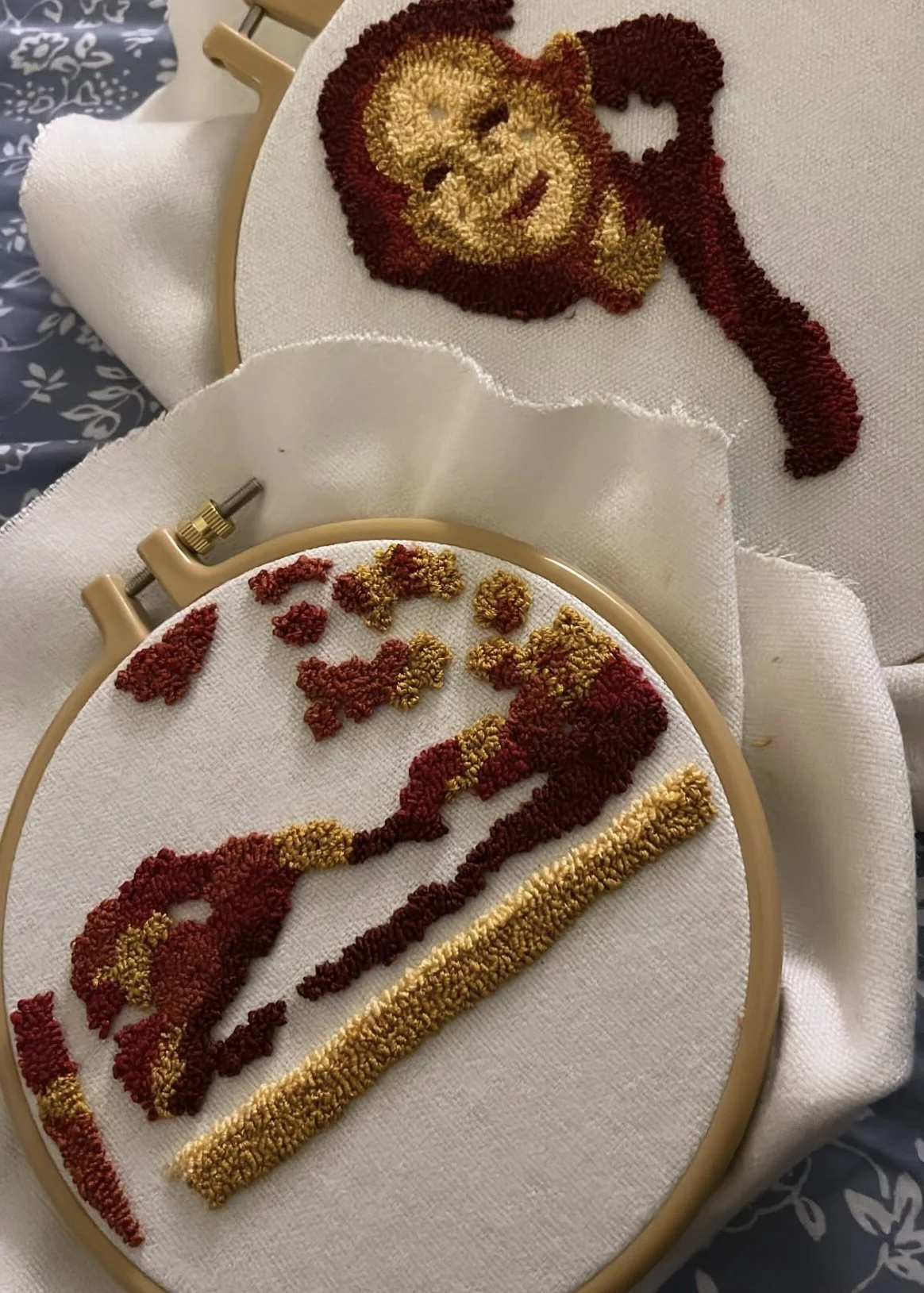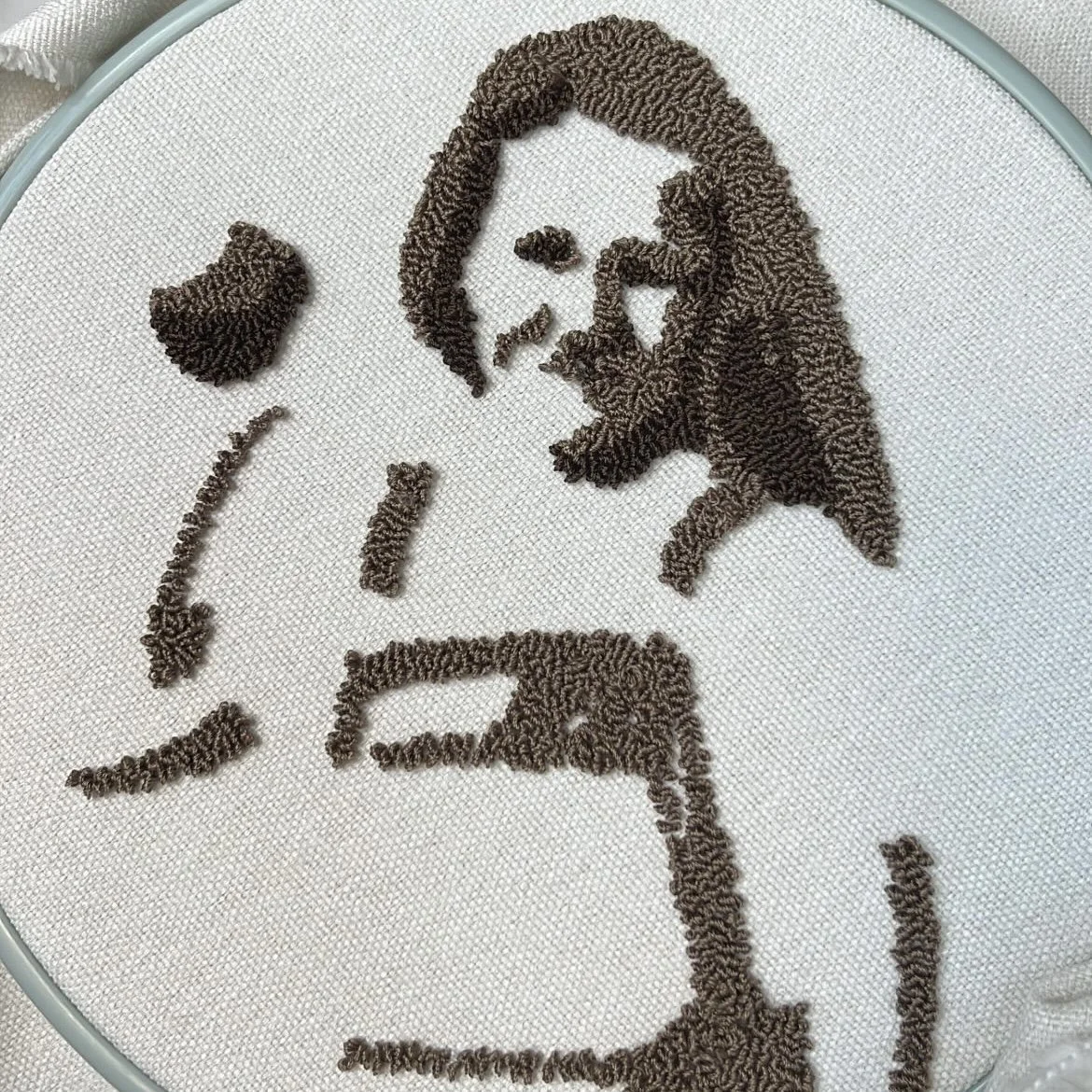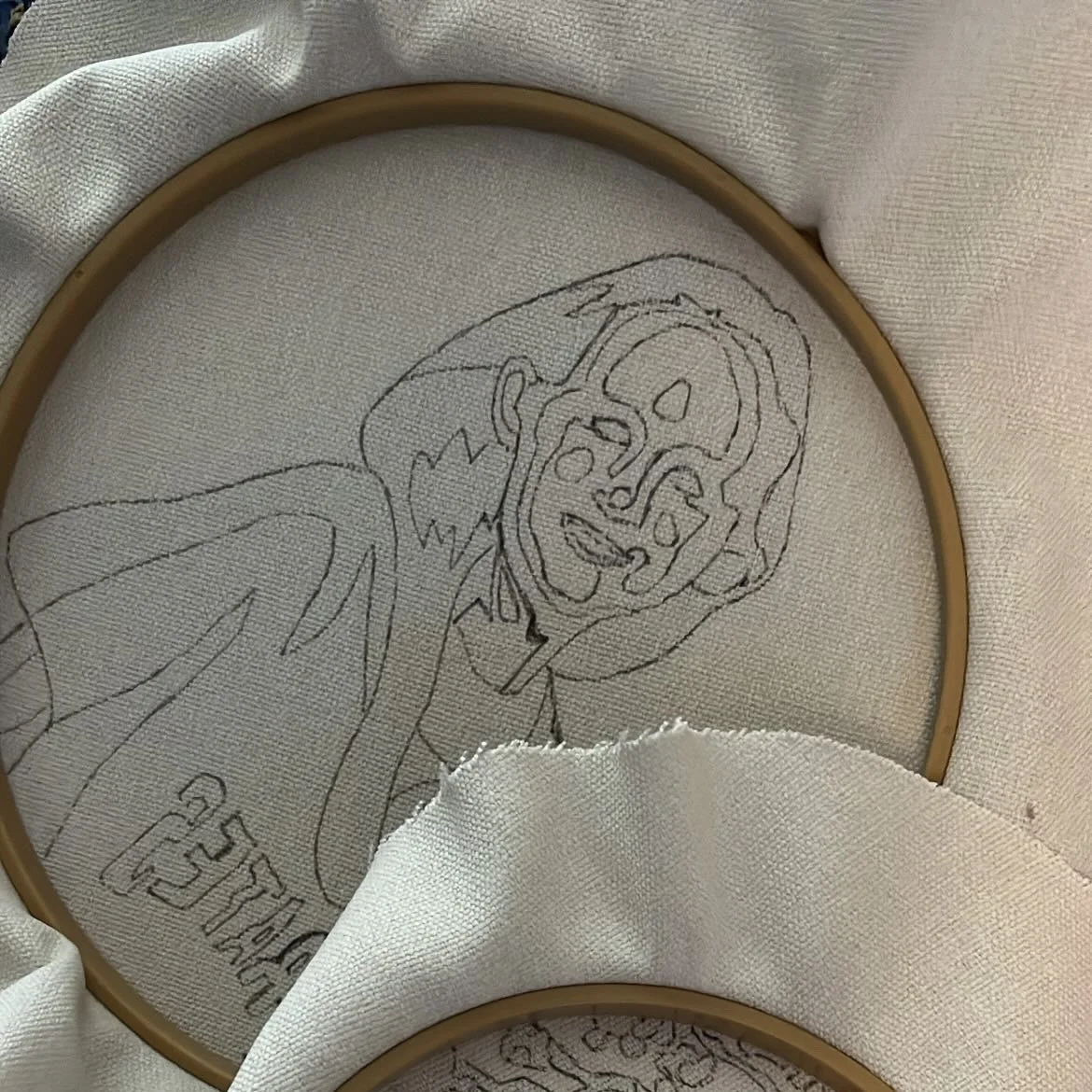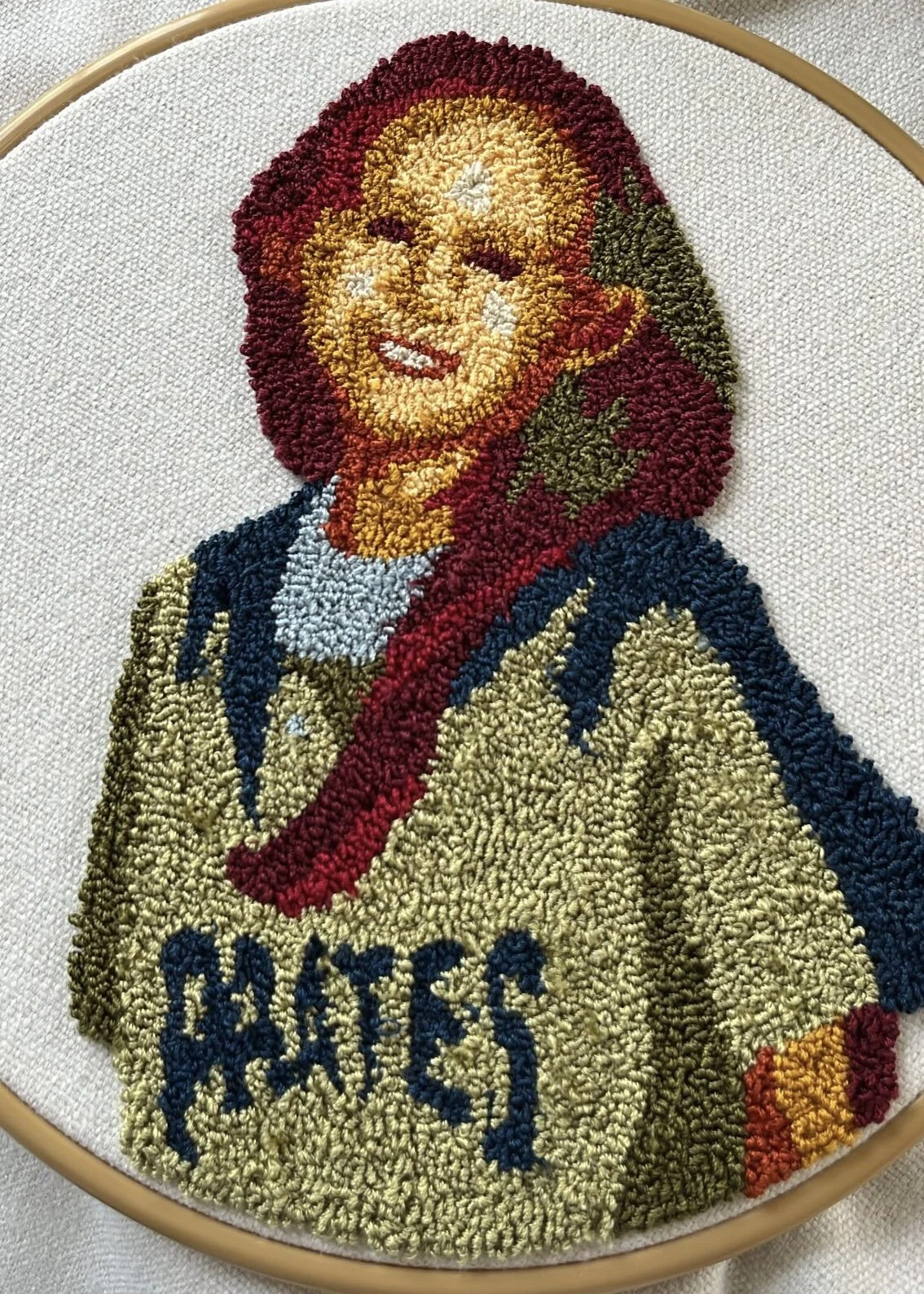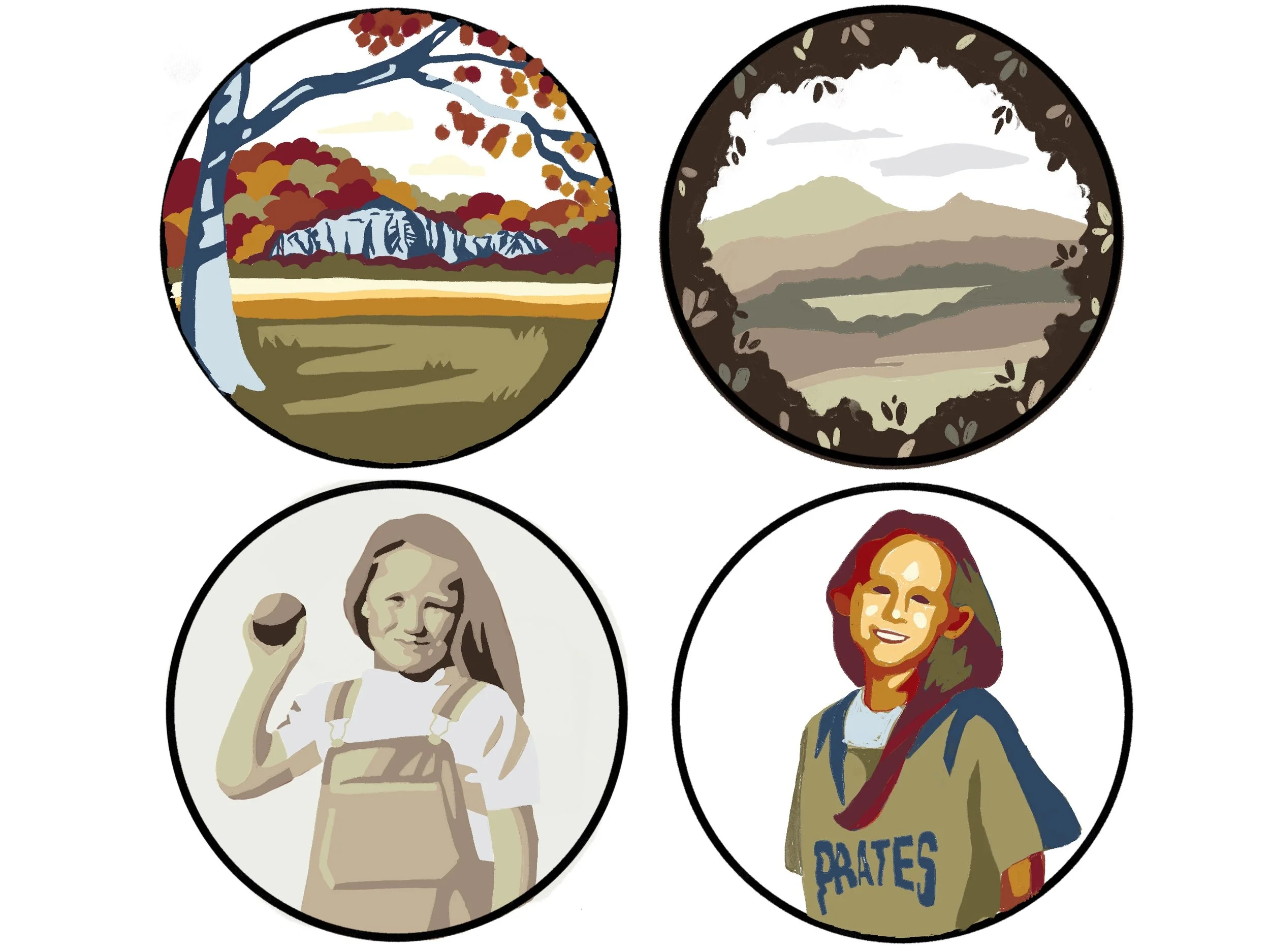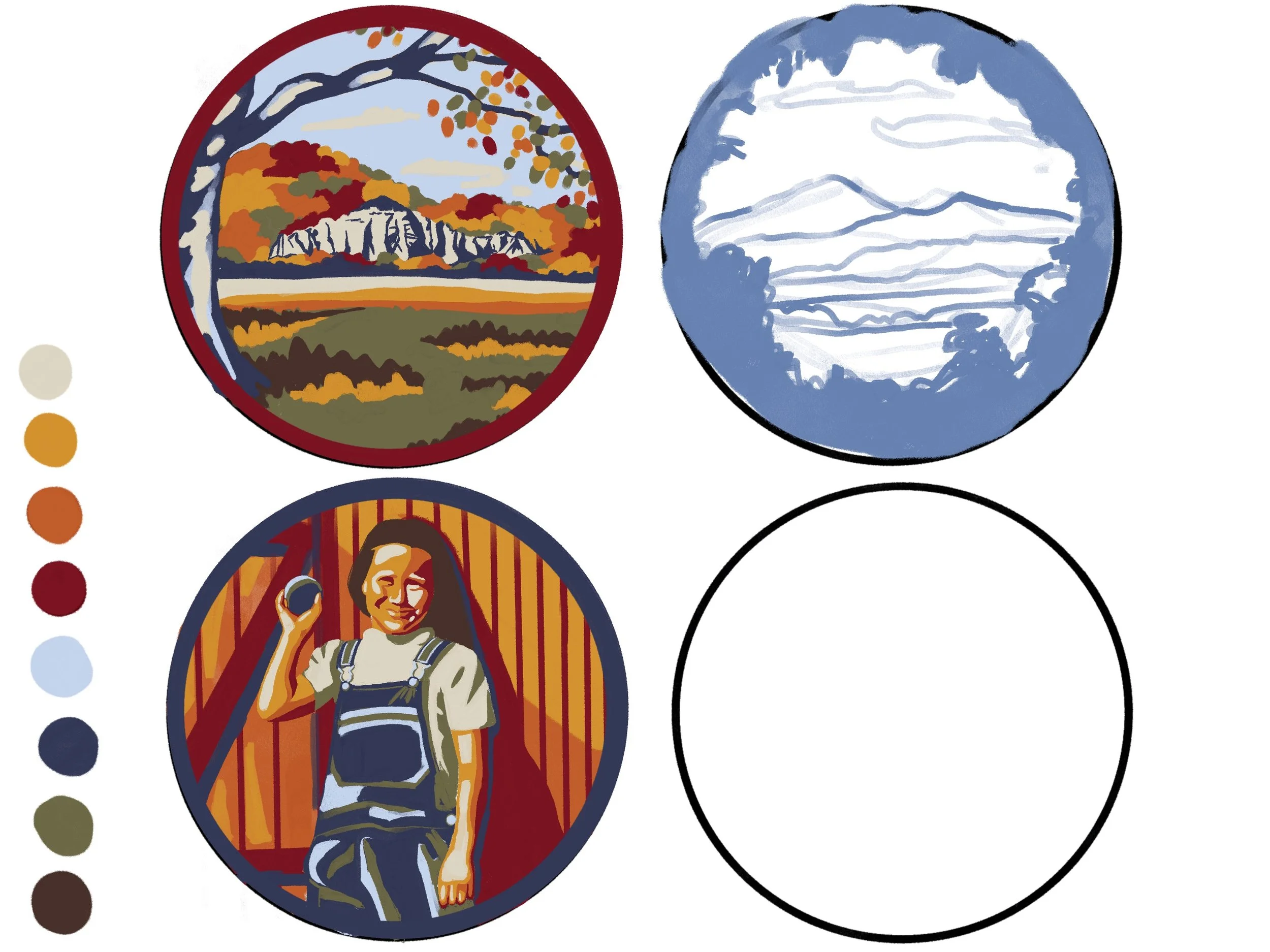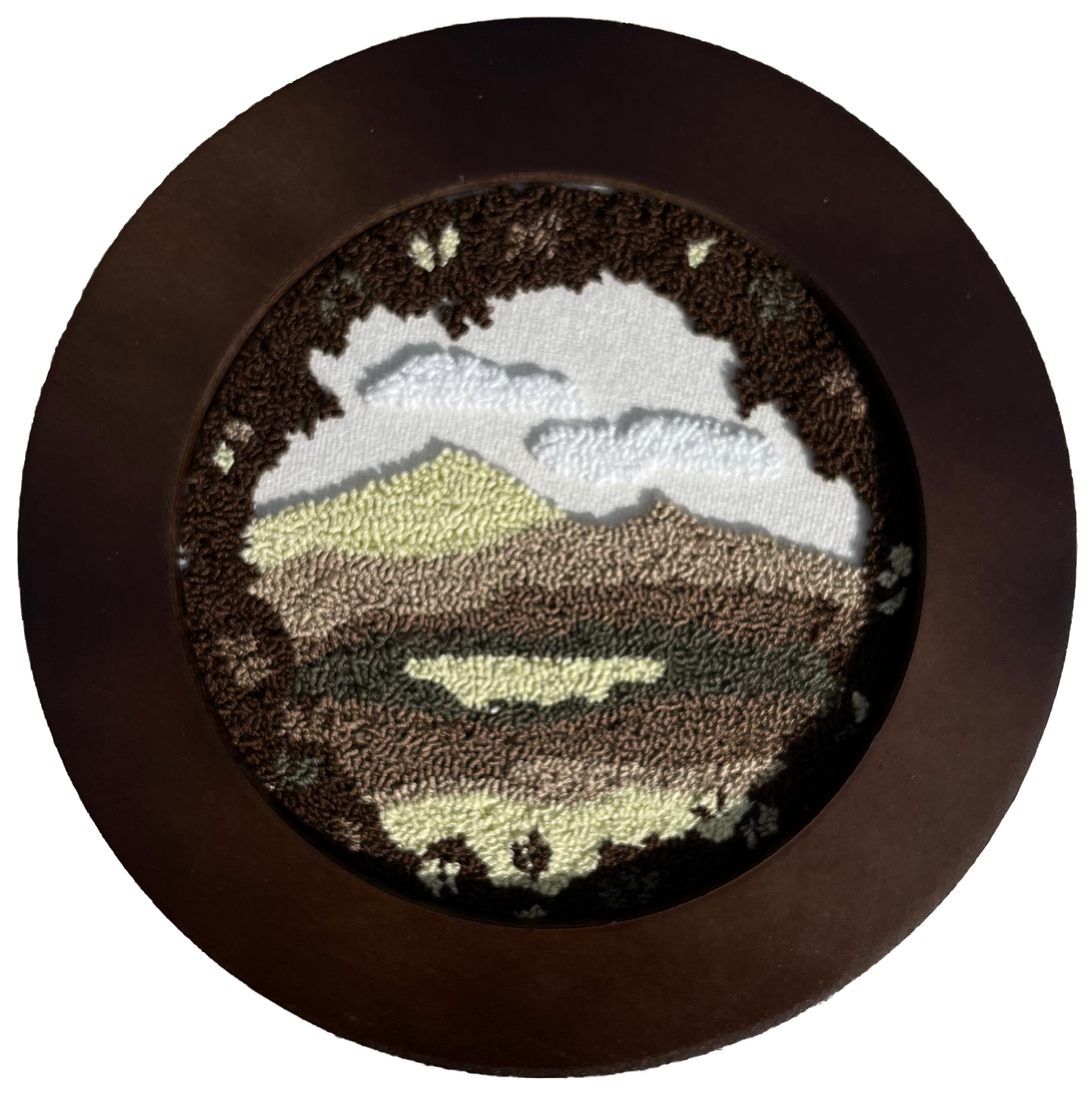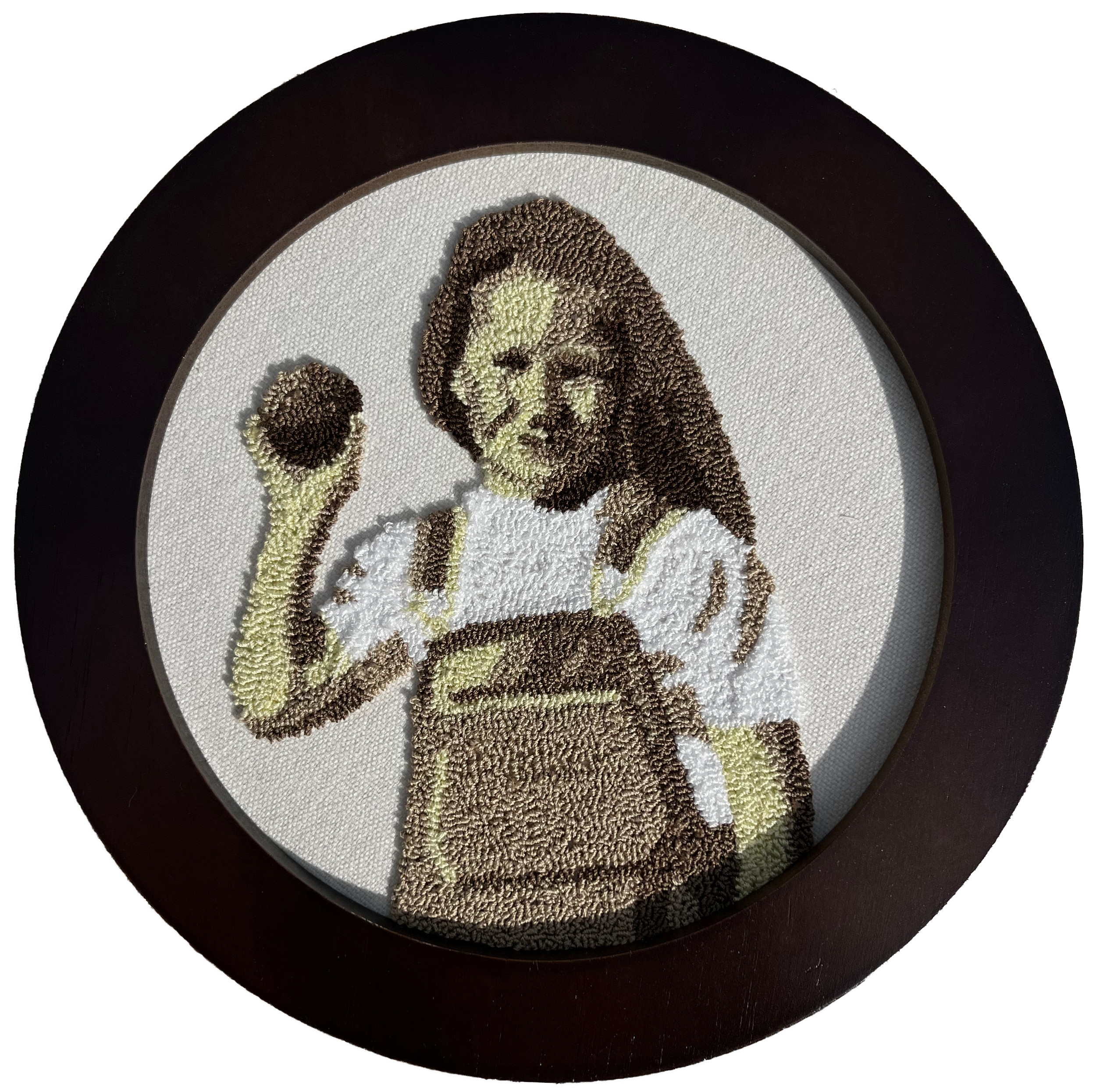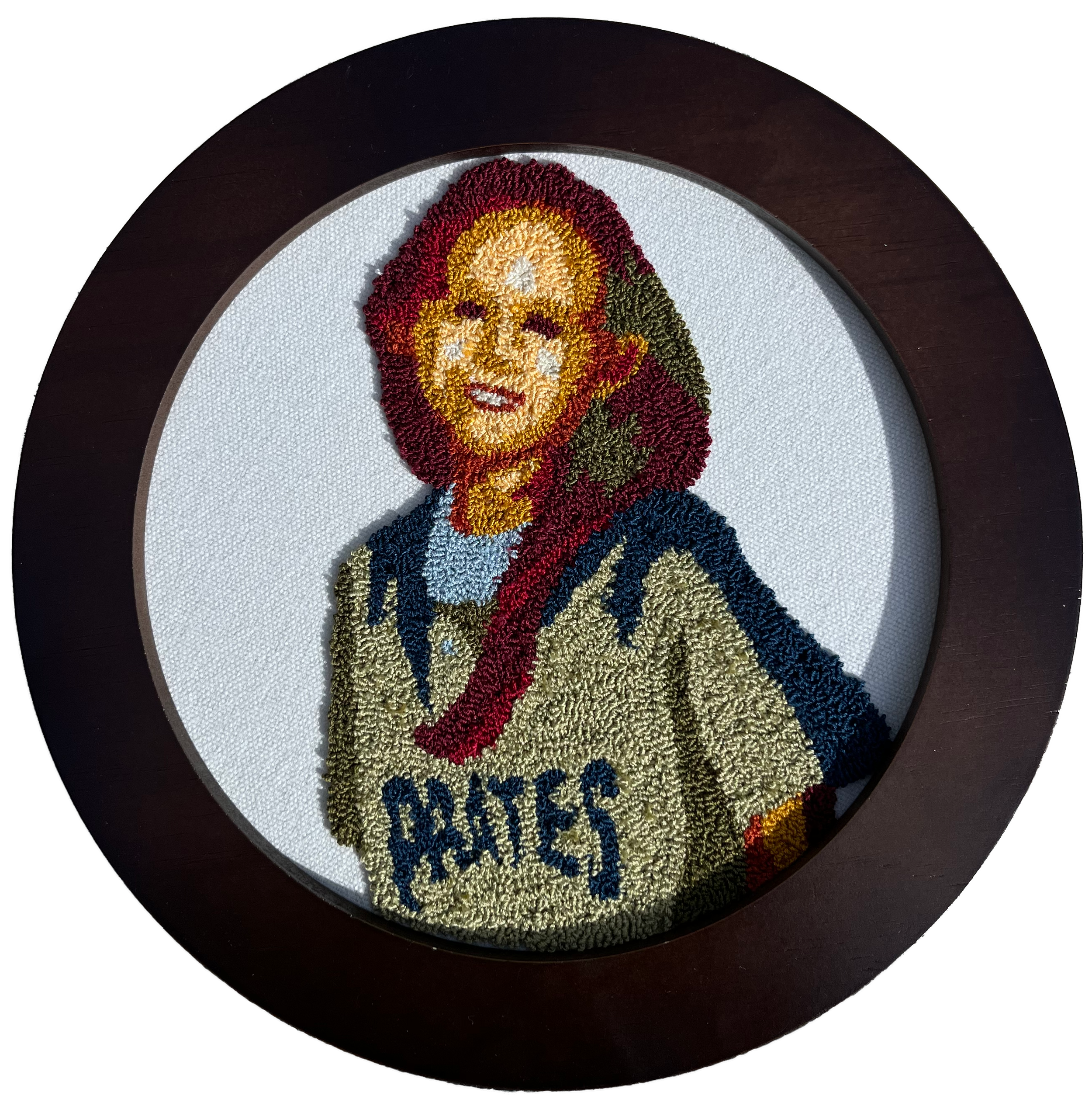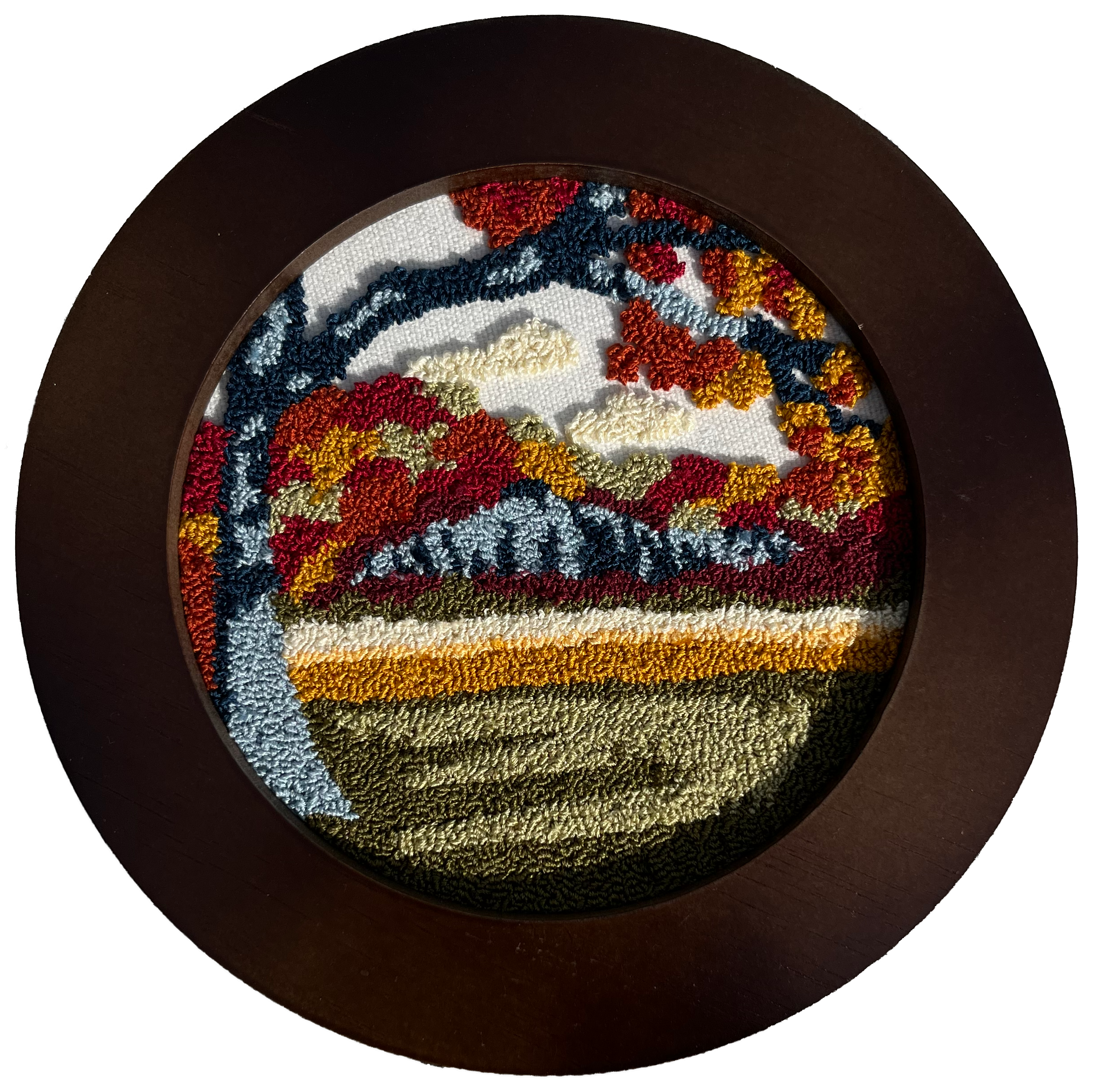Senior Capstone.
Roots of Appalachia
Introduction
What we think of as crafts today, historically were a means of survival with a specific purpose in the Appalachian region. Appalachians have passed down the knowledge of crafting through informal channels, such as word of mouth. Through these informal channels, crafts were used as a means for connecting family and community and continuing the culture. Roots of Appalachia creates an opportunity to provide a new, positive perspective of the region. The primary purpose of the body of work is to refocus the narrative of Applachia’s rich and beautiful crafting history and provide a perspective that allows the people of the region to be proud of who they are, where they came from, and their accomplishments.
The sepia toned pieces feature a portrait of my grandma, who was born and raised in Adams County, Ohio, while the second one features a landscape from Adena Mansion, home of Thomas Worthington, that inspired the seal of the State of Ohio.
The colorful pieces depict a portrait of me at the same age as my grandma and also represents my Applachian experience growing up in Ross County, Ohio. The second piece is a landscape of Copperas Mountain, which is located next to the school I attended from kindergarten to high school and it overlooks Paint Creek and is an integral part of what is known as the Painted Valley.
My hope for this body of work is to showcase the beauty and uniqueness of Appalachia and the people who live there, while also building pride and strengthening community for my fellow Appalachians.
“How might I connect my design and Appalachian identities through traditional Appalachian crafts to increase representation and opportunities in
my community?”
Research Methods
Before I could begin crafting my project, I needed to learn more about Appalachia. When I was younger, I truly had no idea what being “Appalachian” meant - I was just told that is who I was. People in my own community of Ross County have expressed this same sentiment. There is a disconnect between my community and their roots to Appalachia. The term is often surrounded by negative stereotypes and people associate Appalachia with shame, rather than being proud of who they are and where they came from.
Functional
Crafts
Historically, crafts were a
necessity and made for the
means of survival. Today,
crafts are mostly considered
hobbies for enjoyment.
Self
Reliance
Appalachian people are
self-reliant and hard working.
If they want or need something, they will find a way to make
it a reality.
Crafting
Traditions
Appalachians have passed
down crafts through
generations, using them
to connect with family and
continue the culture.
I used methods triangulation to develop a more comprehensive understanding of the problem. There were three types of research I conducted: literature review, self-ethnography, and interviews. Literature reviews helped me further understand the history, demographics, values, and traits of Appalachians and how they relate to crafts. I interviewed people in my community, from younger and older generations, to gain insight on what being Appalachian meant to them and their crafting experiences. Lastly, I did self-ethnography, which allowed me to reflect on my own personal experiences growing up in Appalachia to compare to others’ perspectives.
The Process
I chose to design and craft four embroidery pieces using a technique called punch needling. The punch needle was invented by Ebenezer Ross in 1886, which was inspired by rug hooking (one of many traditional Appalachian crafts). I wanted my designs to depict the area in Appalachia where I grew up and my family. The pieces are done in two color palettes: monochromatic sepia and colors specific to Appalachia. The dichotomy of the palettes represent pre-modern Appalachia and post-modern Appalachia. Throughout this process, I had to learn how to do punch needle embroidery and problem solve through my design and materials.
Conclusion
My senior capstone taught me so much about my community, family, and identity. When I left home for college, I felt so lost and alone. I was homesick more times than not and I always felt something was different. As I explored the world of crafting, I had a mentor who taught me how to quilt like her and all the women before her. She told me about her Appalachian experiences and knowledge. She reminded me how important crafts are to the Appalachian culture - crafts connect families and friends. If I had not been open to learning about my identity then I would not have opened the door to hearing stories about my family members who I did not get to know long enough or at all. I feel more connected to my identity than I ever have. Appalachians value family, sense of place, beauty, humor, hospitality, loyalty, tradition, and the list goes on. I hope Roots of Appalachia continues to open the conversation and positively reflect my community.

